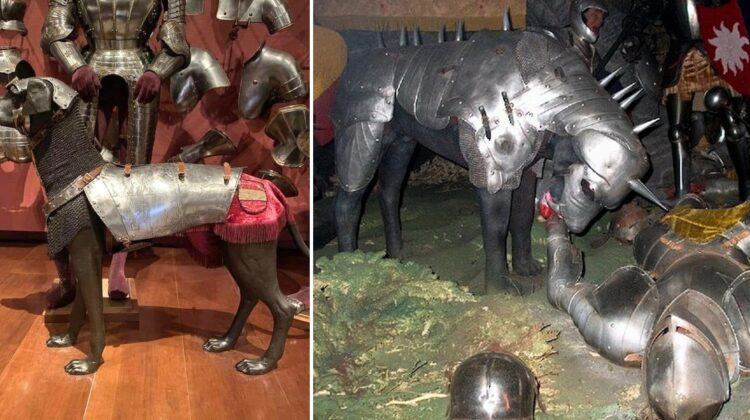
From battlefields to royal courts, medieval dog armors stand as fascinating relics of a bygone era, offering insights into the unique bonds between humans and their loyal canine companions.
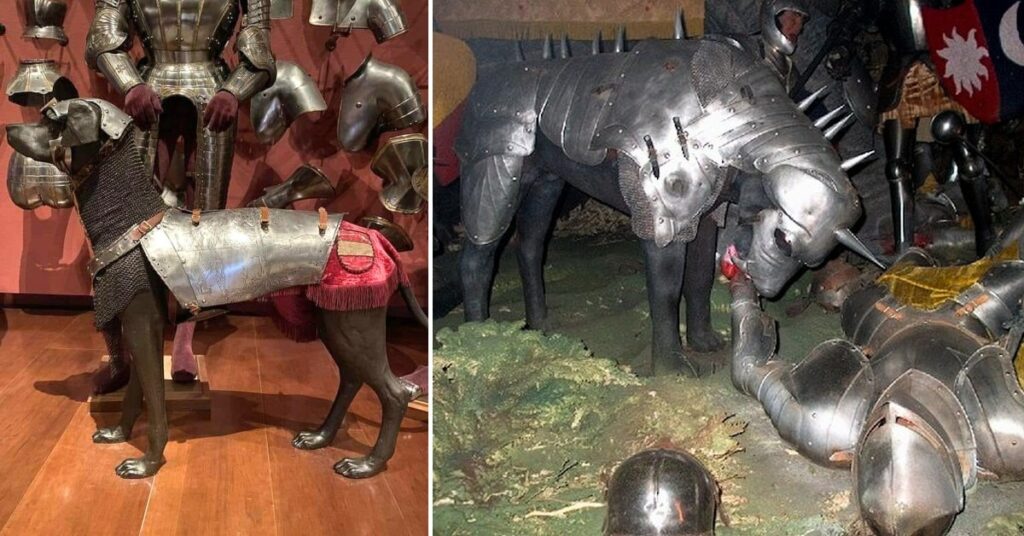
Within the grand halls of the Royal Armory at the Royal Palace in Madrid lies a curious relic – a suit of armor meticulously crafted, not for a valiant knight, but for a loyal canine companion. This 16th-century masterpiece, created by the renowned Desiderius Helmschmid between 1530 and 1540, ignites our imaginations and begs the question: why would a dog need armor?
Imagine a scene straight out of a Renaissance painting: a noble hound, clad in gleaming metal plates etched with intricate designs, trots proudly beside its master. This wasn’t mere fantasy; armored dogs were not uncommon amongst European nobility during this era. Used for hunting, guarding, and even war, these canine warriors served as symbols of status and ferocious protectors.

This particular piece of armor from the armory of Holy Roman Emperor Charles V (1500–1558) stands as a unique example because of its metallic pieces and underlying padded protection. Probably created for a dog particularly dear to the emperor, its decorations depict a hunter ready to attack a charging wild boar, indicating that it was designed to hunt this animal.
Helmschmid’s masterpiece, crafted from etched and gilded steel, is a marvel of both functionality and artistry. Each piece – the breastplate, the faulds, even the tiny helmet – is meticulously designed to fit a dog’s anatomy, offering protection without hindering movement.
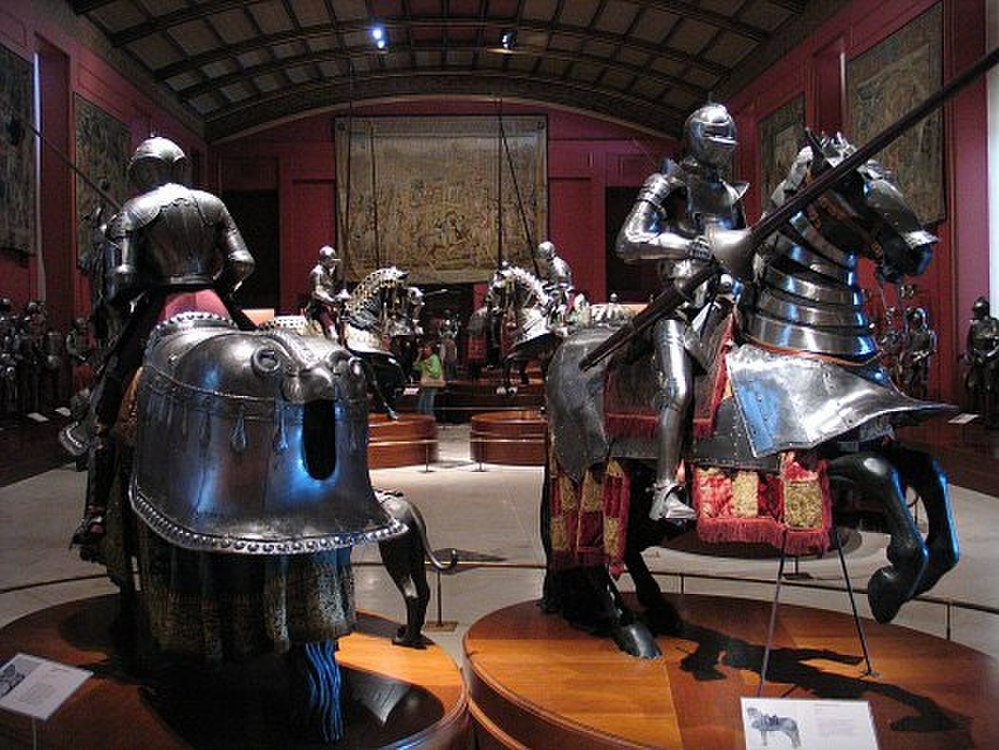
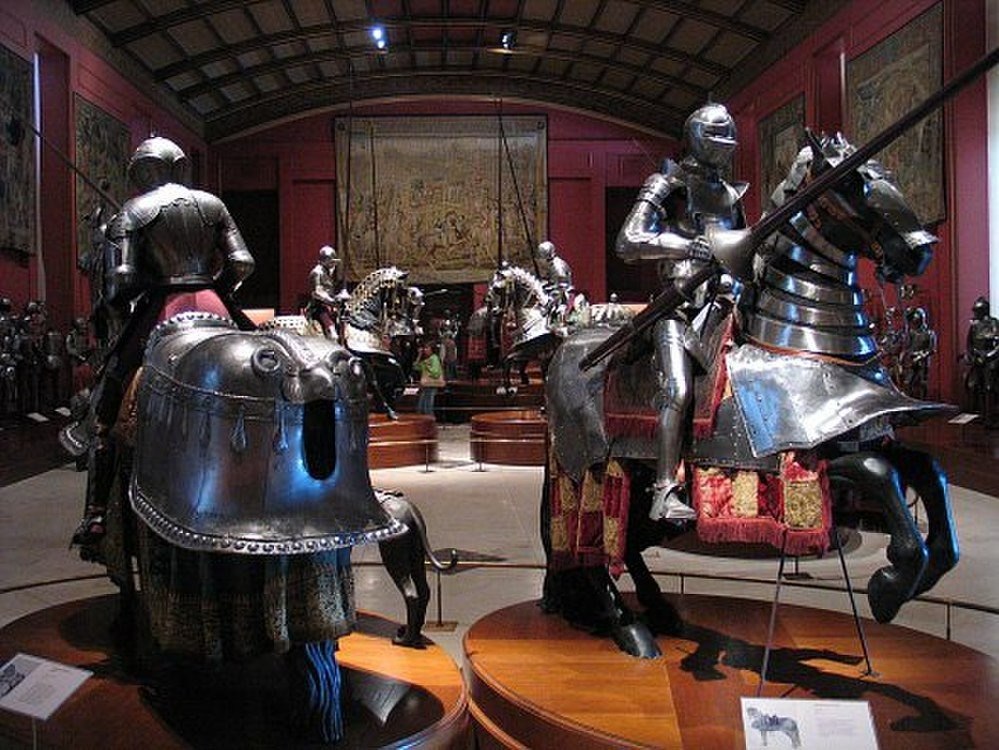
Beyond its historical significance and artistic merit, this dog’s armor whispers stories of a bygone era. It speaks of the deep bond between humans and animals, of the trust placed in these furry companions, and of the lengths people went to ensure their safety. That said, it also raises questions about the ethics of animal involvement in warfare and the societal values of that time.
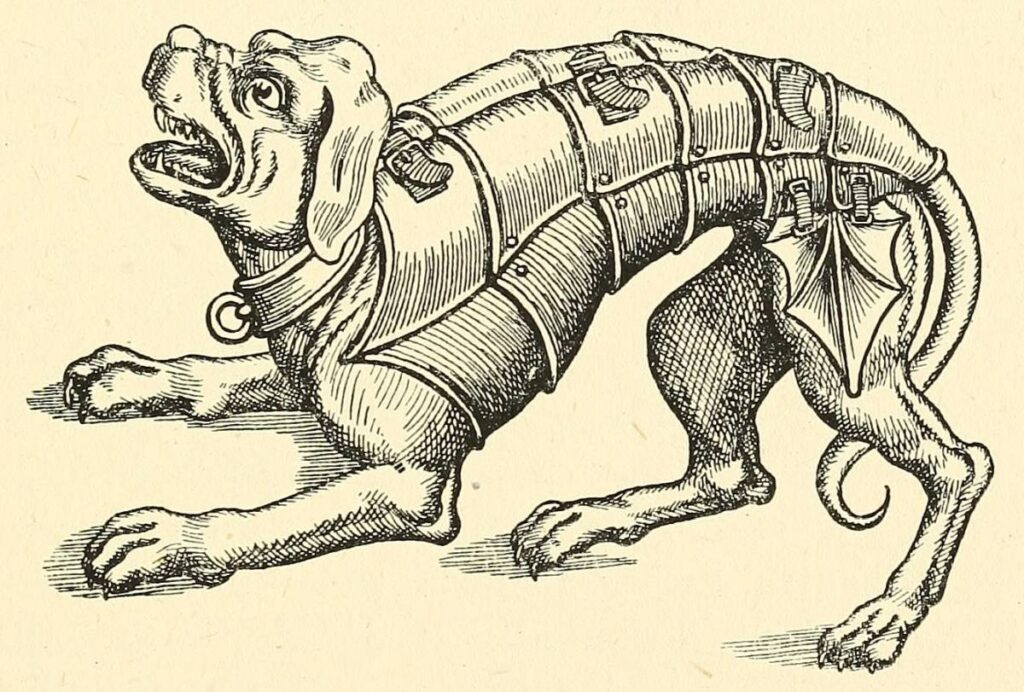
The use of medieval dog armors wasn’t confined to Charles V’s court – they were crafted throughout Europe between the 14th and 16th centuries. Fashioned from leather, steel, or even boiled wood, these canine suits of mail served practical purposes. Used for hunting, guarding, and even warfare, they protected valuable hunting dogs from bites and claws, bolstered the courage of smaller breeds, and instilled fear in adversaries.
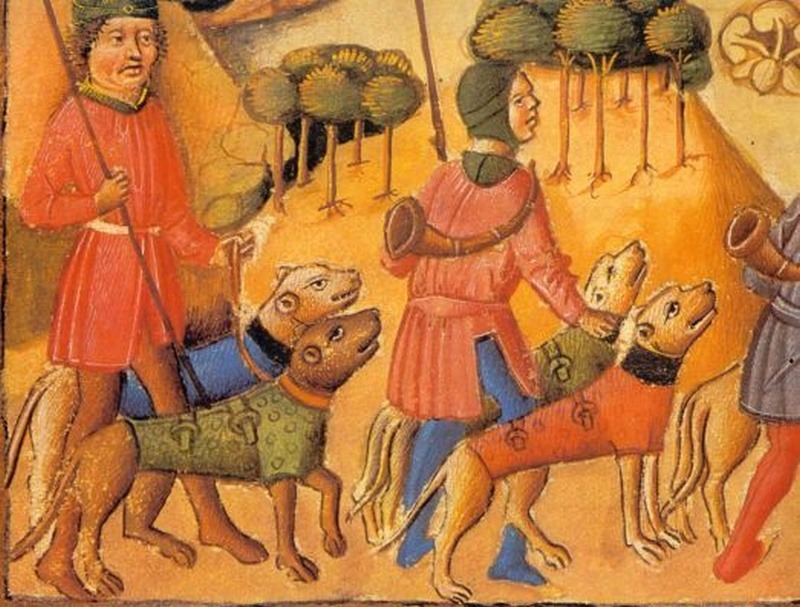
While some were simple leather vests, others were intricate works of art, adorned with etchings, jewels, and even helmets, reflecting the owner’s wealth and status. The dog armor below is probably an exaggeration though… (We couldn’t find definitive evidence as to whether this kind of armor really existed or it is a modern “recreation.” Probably the latter.)
But where did the medieval tradition of using of dog armor come from? Did the ancient Romans, for example, use them? Well, there is no conclusive evidence that the Romans used dedicated dog armor. While Romans certainly utilized dogs for tasks like hunting, herding, and guarding, historical sources and archaeological finds primarily mention protective collars and spiked metalwork, typically focused on deterring wolves and other predators rather than providing full-fledged armor.
Nevertheless, the “reconstruction” below certainly looks interesting, even if such a thing never existed before.
And what about after the Middle Ages? (By the way, the exact end of the Middle Ages is debated, and the dog armor from Charles V’s court could be seen as marking the very end of it). Did the Did the practice of arming dogs continue?
While the use of full-fledged dog armor significantly declined after the medieval period, the practice didn’t completely disappear. Canine armor remained in use, primarily for hunting and guarding, although with less complexity and ornamentation compared to the medieval era. Designs adapted to accommodate advancements in firearms, often focusing on protecting vital areas like the chest and belly.
But there were exceptions, of course. Consider, for example, this Samurai dog armor from the Japanese Edo period that was put up for sale in Japan several years back.
But the most sophisticated and masterfully elaborated dog armors undoubtedly hail from the Medieval period. Their intricate craftsmanship even inspired some of our contemporaries. Just look at this cat armor by Jeff De Boer of Calgary!
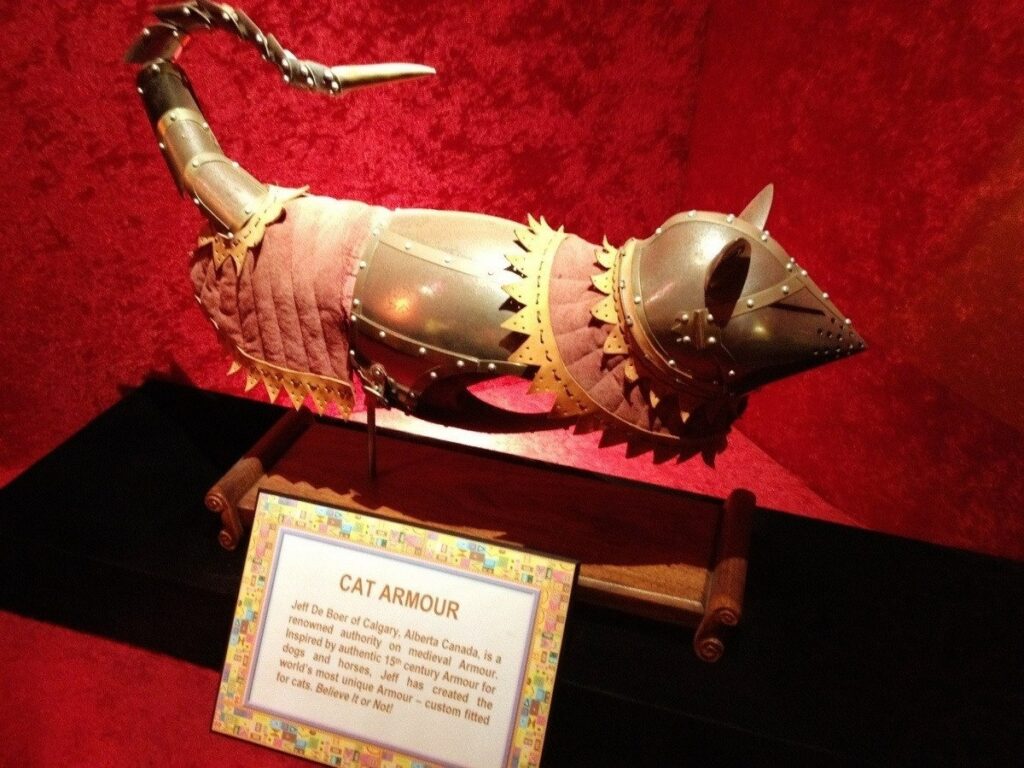
Not to mention this elephant armor… We sincerely hope that the guy inside is a replica (too).
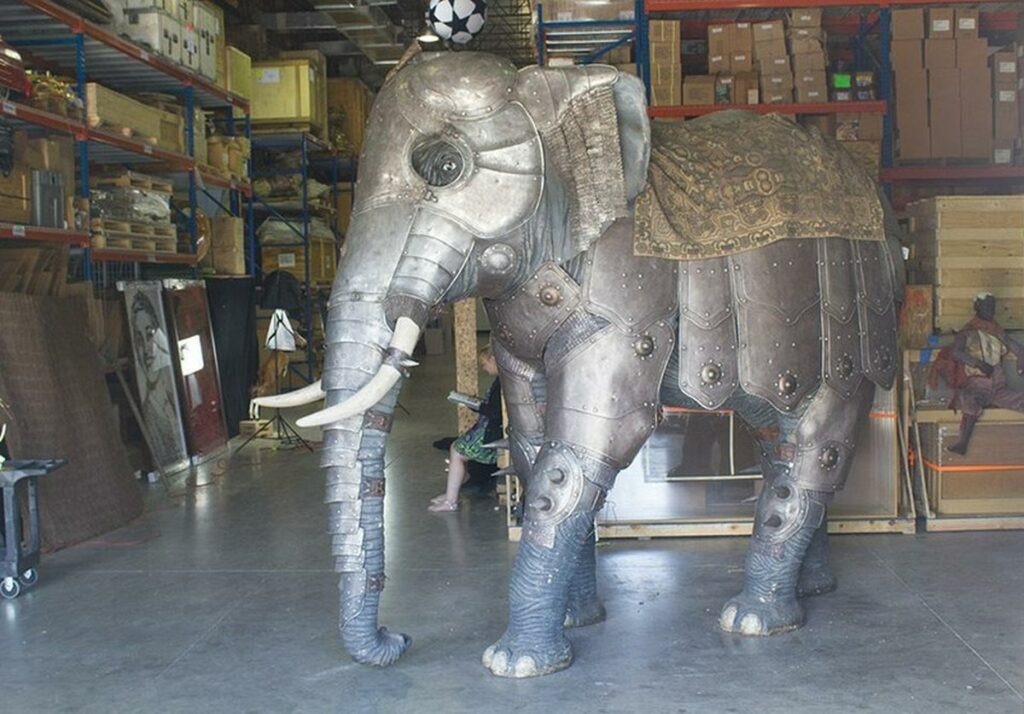
Anyway, the next time you find yourself in Madrid, make sure to visit the Royal Armory and stand before the canine knight of Charles V. Let its gleaming plates spark your curiosity, and allow it to transport you to a time when dogs donned armor and stood shoulder-to-shoulder with their human counterparts.

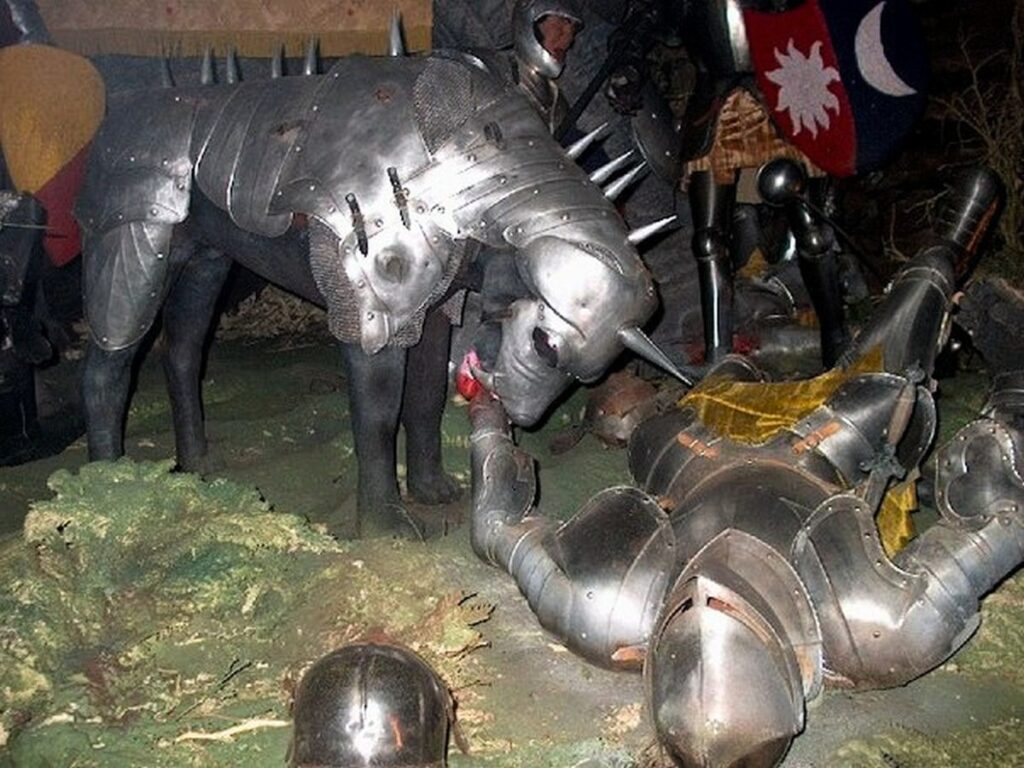
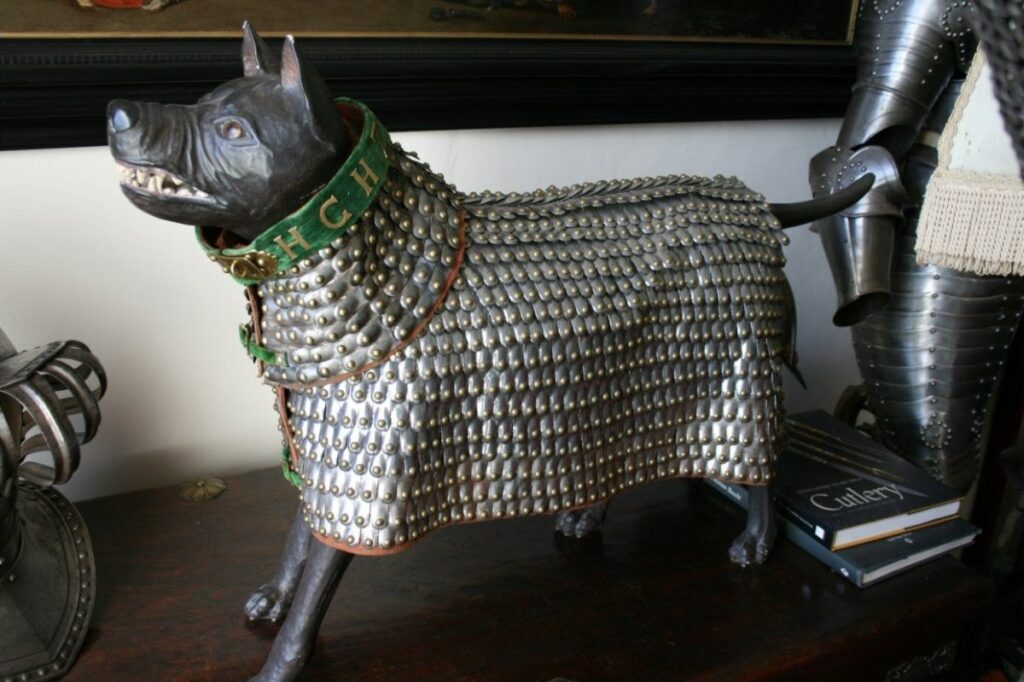
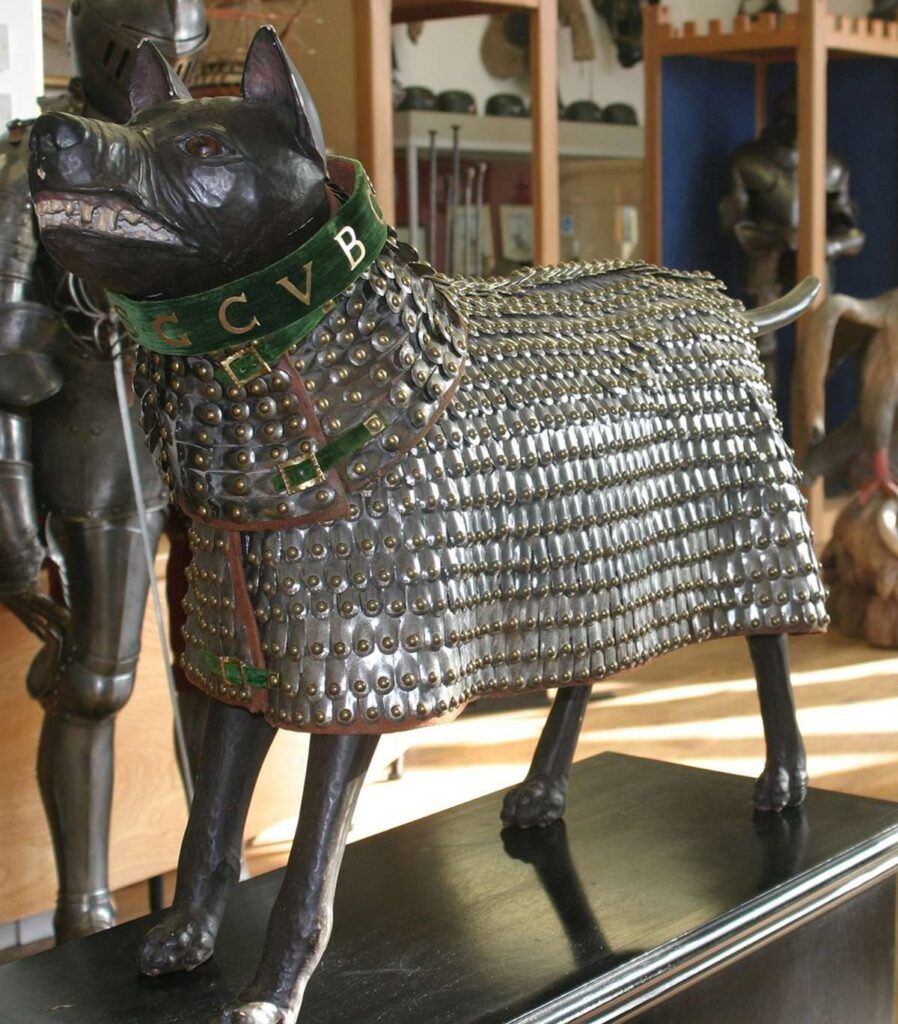

Leave a Reply